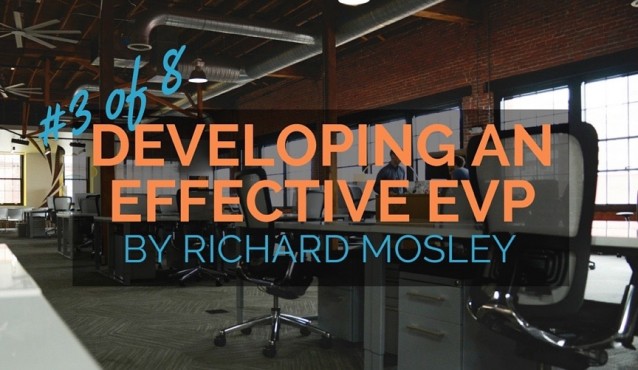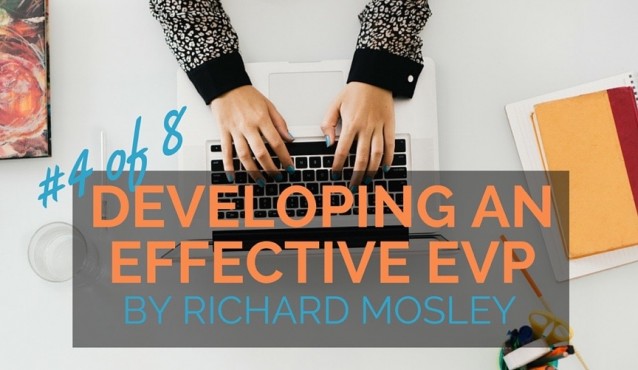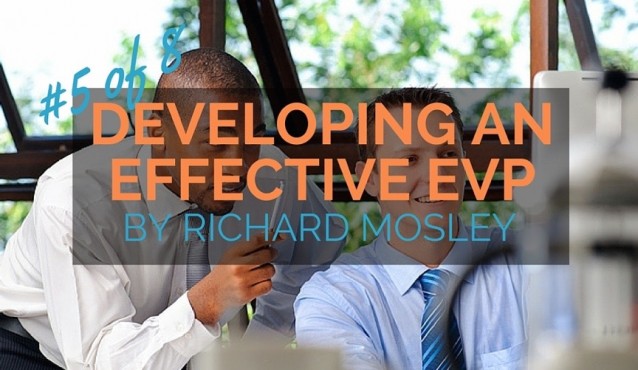Developing an Effective Employer Value Proposition, Part 2: EVPs Are a Team Sport

We’re often asked whether there’s a difference between an employer value proposition and an employee value proposition. The simplest answer is “No.”
However, we do have a preference.
Tomatoe / Tomato
Employee proposition provides a neat mirror to customer or consumer proposition, but there is a downside to “employee value proposition” that “employer value proposition” manages to avoid. Over the last few years, there has been a rising interest in “personal branding,” by which we mean people marketing themselves and their careers as “brands.” This has led to the phrase “employee value proposition” becoming more ambiguous, because that phrase could refer to the employee’s proposition, rather than the employer’s.
It’s not a big deal, but in order to avoid confusion, we recommend using “employer value proposition.”

Doesn’t the notion of an employer brand undermine the integrity of the corporate brand? If you’ve defined your core values, why do you need an EVP? These are very common challenges to anyone involved in developing an EVP and employer branding strategy.
No one would deny the importance of maintaining a consistent overall perception of your brand, nor would they deny that core values should be reflected in everything an organization says and does. However, it’s important to point out that brand integrity does not mean brand uniformity.
The corporate brand should set the parameters within which brand relationships are established and maintained, but it also needs to provide enough breathing space for brand communication and experience to be tailored to the needs of different stakeholders. Investors need a good rate of return.; business partners need a strong sense of trust and cooperation; customers need reliable and distinctively valuable products and services; and employees need to feel they have opportunities to learn and develop.
The brand name may be the same, but the nature of the brand experience and the benefits sought from association with the brand can vary significantly depending on the nature of the relationship. The reason that core values are often so generic is that the corporate brand they underpin has to appeal to a very wide audience. The reason why EVPs have become so necessary is because competing for talent seldom succeeds without a sharper, more distinctive proposition tailored to talent’s more specific needs as employees.
EVPs Are a Team Sport

The inclusion of line managers in the core team is qualified because it tends to be less related to thee managers’ core functions.Involvement in the process can generally be achieved through less time-intensive stakeholder interviews, EVP development workshops, validation meetings and sign-off presentations.
Most of the EVP development projects we have been involved in have been led by HR, with the support of the corporate branding team — i.e., marketing and communications — rather than the other way round. This makes sense from our perspective. While they tend to have less brand management experience, HR departments ultimately take accountability for most of the processes that shape the employer brand experience.
In a global EVP development project, early regional representation is also a critical factor in both getting to the right proposition and ensuring local management acceptance. As Viviane De Paula, Santander’s HR lead in Brazil, explains:
“Co-creation was a key success factor. Our global HR leadership team defined six key projects to take HR to the next level at Santander, but rather than assuming all of the new thinking would emerge from the center, they looked at best practices globally, and chose three different centers to lead each one. For the employer brand development project, this included Brazil, as we’d already conducted some advanced work in this area. It also included Argentina, where Santander has been recognized as ‘best employer’ for many years, and our employee engagement practices are extremely good. Together, with Santander in Spain, we took the lead on developing the new global EVP, with input at various points from six of our other major markets. This ensured a more balanced global perspective throughout and a much higher level of local ownership and commitment to the final result.”

